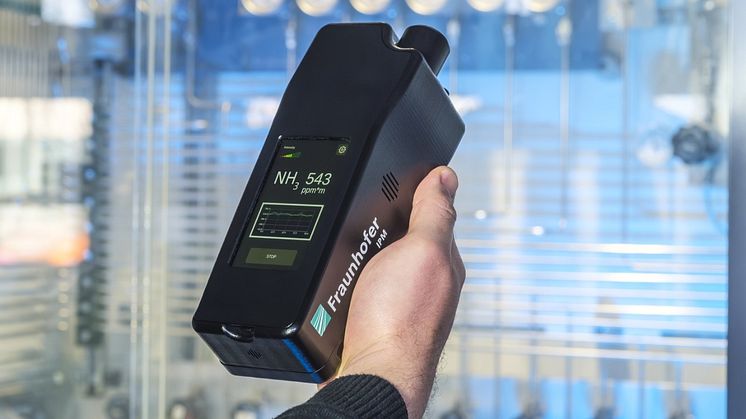
News -
Sensors for the Safe Use of Hydrogen
The safety of pipelines, storage facilities and connection points is essential for the expansion of the hydrogen infrastructure, as the invisible and odorless gas is highly flammable and explosive. The Fraunhofer Institute for Physical Measurement Techniques IPM in Freiburg has developed sensor and measurement systems that reliably detect even the smallest quantities of hydrogen and quickly detect leaks.
This research work was part of the TransHyDE hydrogen lighthouse project of the Federal Ministry of Education and Research. Here, science and industry are working together on solutions for the transportation and storage of hydrogen. The Fraunhofer team headed by Dr. Carolin Pannek led the Safe Infrastructure sub-project. As hydrogen is used in different applications, the researchers developed three different sensor systems.
The first sensor is based on the photoacoustic effect. Light excites the gas to vibrate and generates a sound wave. A membrane in the sensor housing allows hydrogen to penetrate, which changes the resonance frequency. Microphones detect this change so that escaping hydrogen from tanks or pipes can be detected. The sensor could be distributed in rooms like a smoke detector or connected to a sensor network. The system also detects impurities in the hydrogen that could damage fuel cells, for example.
Another sensor system is a laser spectrometer for detecting ammonia (NH₃), which serves as a hydrogen carrier. Storage and transportation are easier with ammonia, but it is highly toxic, which is why leaks must be detected quickly. The spectrometer absorbs ammonia-specific wavelengths and displays a result immediately. The device can be held by hand or mounted on robots and drones to inspect tanks and pipes from up to 50 meters away.
The third system is a Raman spectrometer based on the interaction of light and matter. The so-called Raman shift gives each substance a specific spectral fingerprint. Fraunhofer IPM has developed a filter-based Raman sensor that specifically detects hydrogen in complex media. Thanks to low-cost components such as CMOS cameras, the device is mobile and can be used for hydrogen analysis in the energy industry.
All three sensor systems are flexibly adaptable. Fraunhofer experts advise industrial customers, energy suppliers and operators of hydrogen projects on safe use. Pannek is convinced: “The starting signal for the expansion of the hydrogen economy can be given.”

